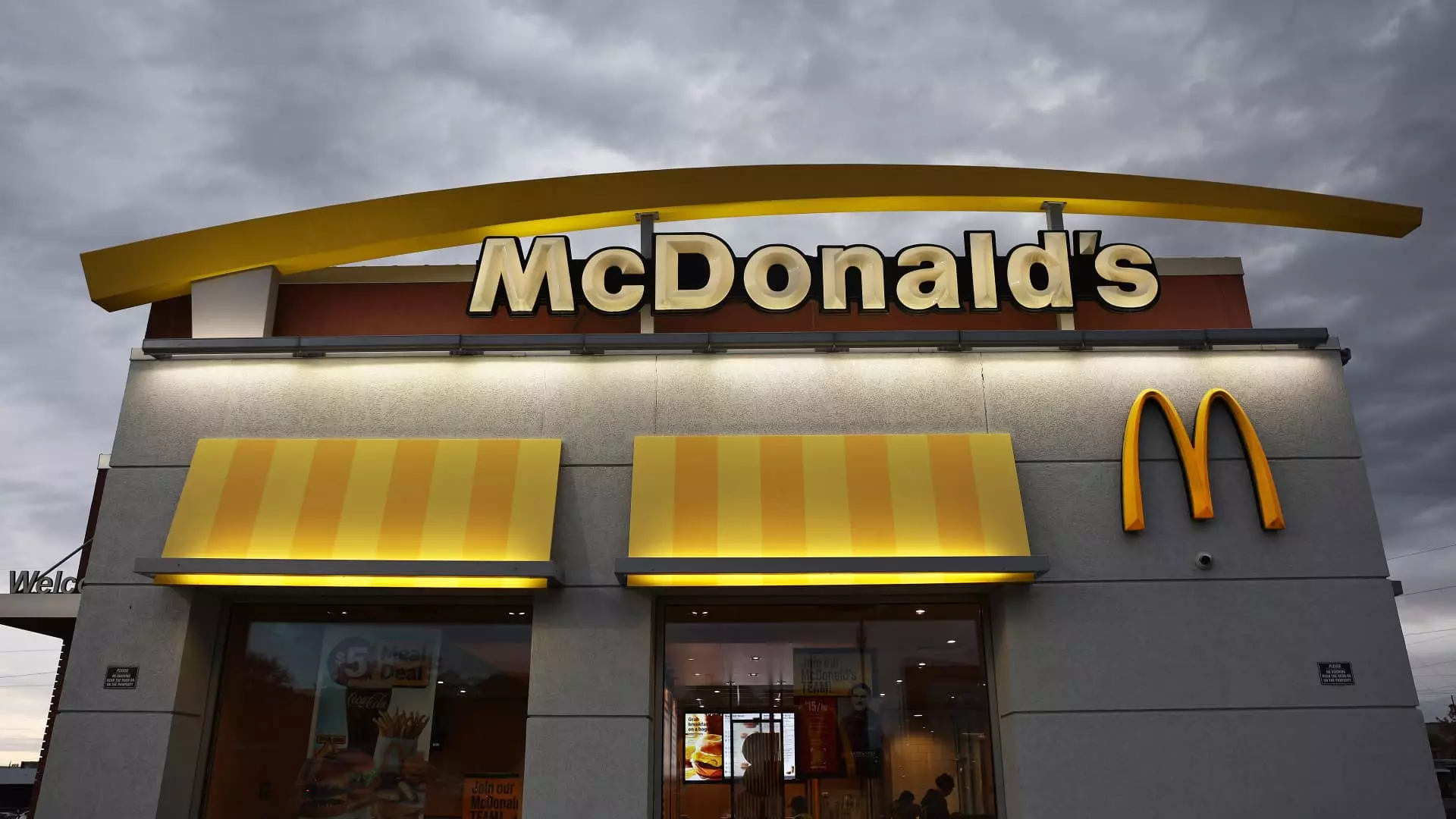The latest financial report from McDonald’s underscores a dichotomy nestled within one of the world’s largest fast-food chains. While global performance displayed resilience, the U.S. market faced hurdles, significantly influencing overall revenue. This article dives deeply into the nuances of McDonald’s quarterly report, its ramifications, and the steps the company may take moving forward.
On a recent Monday, McDonald’s revealed its quarterly results, which elicited mixed reactions from analysts and investors alike. The fast-food titan reported an adjusted earnings per share (EPS) of $2.83, aligning with market expectations. However, a concerning aspect was its revenue generation, which amounted to $6.39 billion—short of the anticipated $6.44 billion. Moreover, net income for the fourth quarter displayed a slight decline, falling to $2.02 billion compared to $2.04 billion the previous year. The flat net sales year-over-year raises questions about the chain’s long-term sales trajectory.
Despite meeting EPS expectations, the stagnancy in net sales reflects broader market challenges and competition that McDonald’s must navigate. Although overall same-store sales growth of 0.4% outpaced Wall Street projections, the troubling performance of its U.S. segment starkly contrasts this achievement.
The underwhelming performance in the U.S. raises legitimate concerns. Same-store sales dipped by 1.4%, exceeding analysts’ estimates of a modest 0.6% decline. A critical event contributing to this downturn was an E. coli outbreak linked to McDonald’s Quarter Pounder burgers. This situation drastically affected customer footfall, particularly in heavily impacted states. The outbreak, which the CDC formally declared over in early December, left an indelible mark on consumer perception and sales traffic.
Adding insult to injury, while the overall traffic to McDonald’s restaurants was positive, it was overshadowed by customer spending trends. This suggests an emergent pattern where diners are becoming more selective, perhaps influenced by economic sensitivities. Price-conscious strategies, such as the introduction of a $5 combo meal, momentarily boosted sales but may not be sufficient if consumer habits do not alter. Analysts warn that for value meals to successfully drive profitability, customers must supplement their orders with non-discounted items, which did not materialize this quarter.
Conversely, McDonald’s international sales figures painted a more promising picture. Both international divisions reported same-store sales growth, with the international developmental licensed markets—including regions like the Middle East and Japan—rising by 4.1%. Though only modest, the international operated markets division, which includes significant territories, managed a growth of 0.1%. This juxtaposition indicates that while U.S. operations encounter falling sales, the global appetite for McDonald’s menu remains robust.
This pattern likely emphasizes the necessity for McDonald’s to adapt to varying market demands. Consumer preferences in the U.S. appear to diverge from those internationally; therefore, localized strategies and menu customization are crucial. McDonald’s ability to leverage successful practices from its international markets could guide them towards revitalizing its domestic operations.
As McDonald’s looks to bounce back from these setbacks, rebuilding customer trust is paramount. The impacts of food safety incidents can linger long beyond the resolution of the issues, fundamentally altering consumers’ perceptions. A strategic pivot towards reinforcing food quality and safety protocols, along with transparency in their supply chain processes, is vital for McDonald’s recovery and sustained consumer loyalty.
Additionally, the company must innovate within its menu offerings to entice not just value-seeking consumers but also the diverse tastes of a changing demographic landscape. Leveraging technology for enhanced customer engagement—through digital ordering platforms or personalized marketing—can be pivotal as well.
McDonald’s recent quarterly performance highlights the challenges inherent in operating a global brand within varying market conditions. While the overall picture is somewhat tempered by international growth, the company’s domestic struggles spotlight critical areas for improvement. Moving forward, McDonald’s must recalibrate its strategies to ensure that both immediate recovery and long-term growth are within reach.


Leave a Reply